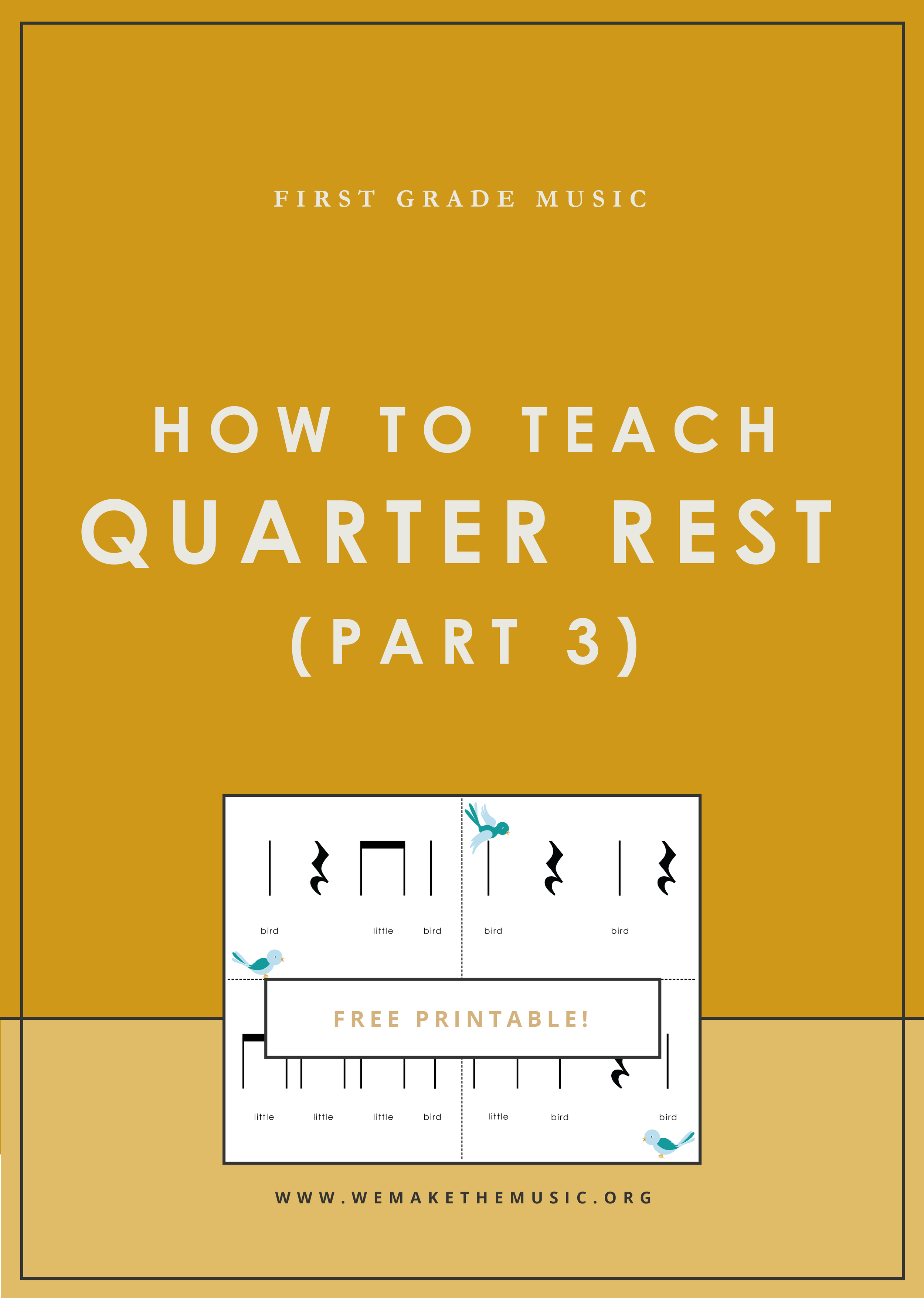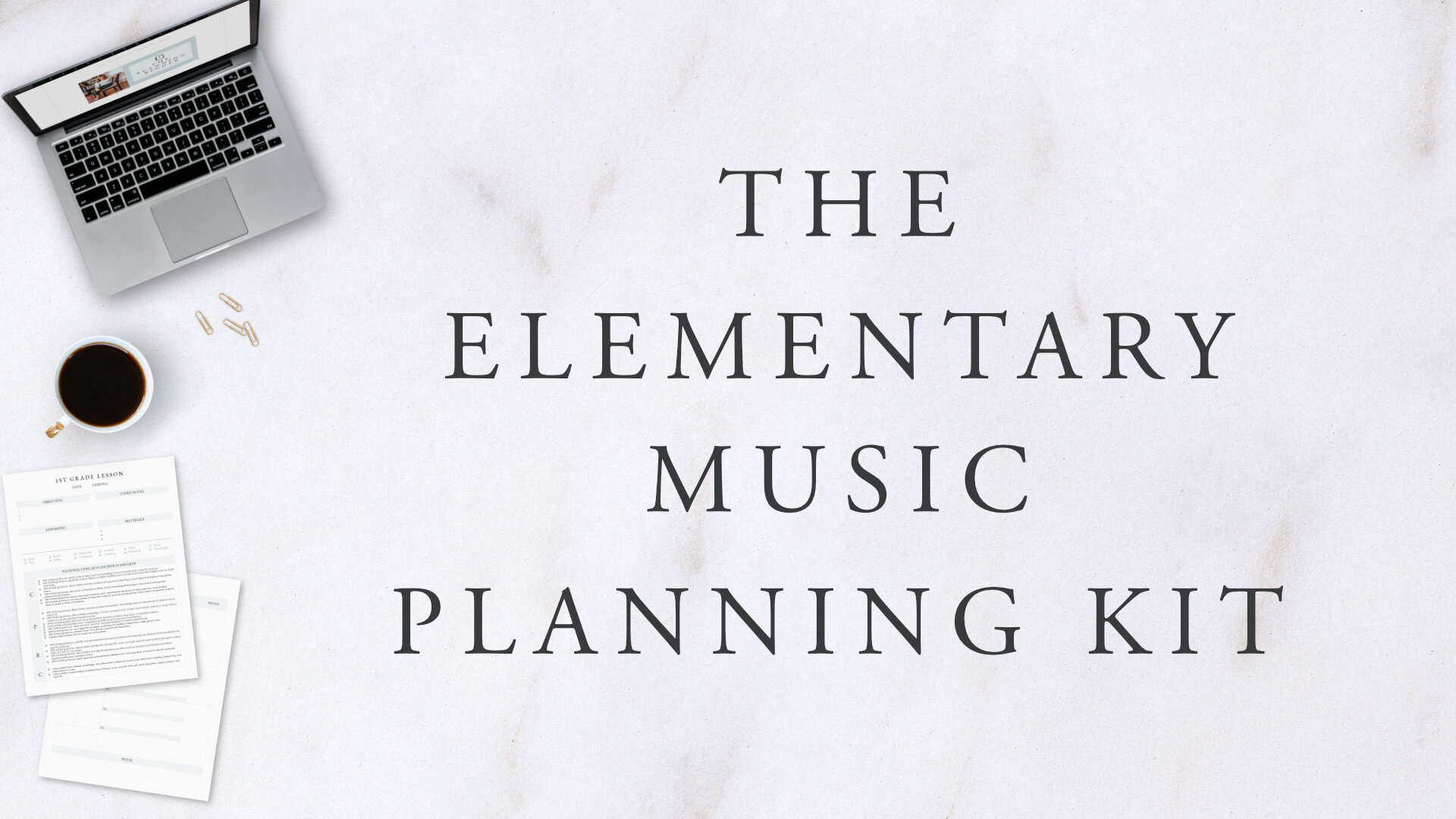Finally, after choosing songs and preparing our mystery rhythm, we know the real name to a beat without a sound.
>> Songs to Teach Quarter Rest
>> How to Prepare Quarter Rest
>> How to Present Quarter Rest
Teaching students how to truly hear a rest is teaching students how to be thoughtful, aware musicians. To not play something, but to silently hear it, takes a lot of musical maturity, and it’s one reason I love teaching quarter rest.
Here are some of my favorite ways to practice ta rest. They involve student compositions, instrument choice, performance, and a reflection time.
Let’s jump in!
Compose with quarter rest
Student-created rhythms are wonderful for practicing elements - what better material to use than material students have created themselves?
This rhythm pattern could serve as an ostinato for the whole piece, or it could serve as an interlude, intro, or outro.
For the song, Bluebird, Bluebird, my students were given these rhythm building blocks:
(Click here to download!)
In small groups, students create a four bar pattern using their rhythm building blocks. Since the purpose of this activity is a quarter rest, students include a silent sign for rest.
When the rhythm cards are in their final order and students can clap and speak their rhythm several times in a row as a group, students put their composition on body percussion.
**Teaching tip: Especially in younger grades, it’s a good idea to model how to have a creative discussion when several students are contributing ideas. Explain that your idea may not be chosen every time, and it’s important to work together as a group to come up with a musical idea that represents everyone.
Add Instruments and Perform
Once students have their compositions ready, it’s time to put them on instruments.
Step 1: Choose instruments in each group:
The teacher may demonstrate several options for instruments: Triangle, rain stick, hand drum, cabasa. . . .
Ask students to discuss in their small groups which instruments would be best, and which would be worst for playing their compositions. Students will discover that not all instruments are appropriate for their compositions - some instruments have a reverberation that lasts far beyond its strike - no good for playing a rest.
Since the purpose of this activity is the quarter rest, students should opt for guiros, hand drums, tambourines, cabasas, maracas, and other instruments that allow the quarter rest space to be clear.
Step 2: Practice their composition on instruments
When students move to instruments, I ask if they can recreate their body percussion on their new percussion instruments. Students can think through all the different sounds their instrument can make (high / low, loud / quiet, etc.), and make connections to levels, volume, and pitch of their body percussion.
Step 3: Give a performance!
With a composition, body percussion and instrumentation complete, students are ready for a “final” performance of their ostinati.
This performance could be in front of peers, in front of you, in front of the classroom teacher, or a larger parent or school audience.
Talk it through
Did we stay together as a group the whole time? Was the space for the quarter rest totally empty?
Our students need time to think through and evaluate their musical performance. They need time to hear feedback from their peers. Create space in your lesson for students to reflect on their performance, and make revisions if they feel it’s necessary.
When we teach quarter rest, we’re practicing inner hearing - inner pulse. We’re teaching how to listen.
I like this activity for practicing quarter rest because it draws upon so much previous musical knowledge. It also puts students in the driver’s seat of their own learning: creating music, exploring new ways to play it, and thoughtfully reflecting and revising their work. It’s a beautiful process to watch!
Happy teaching!












